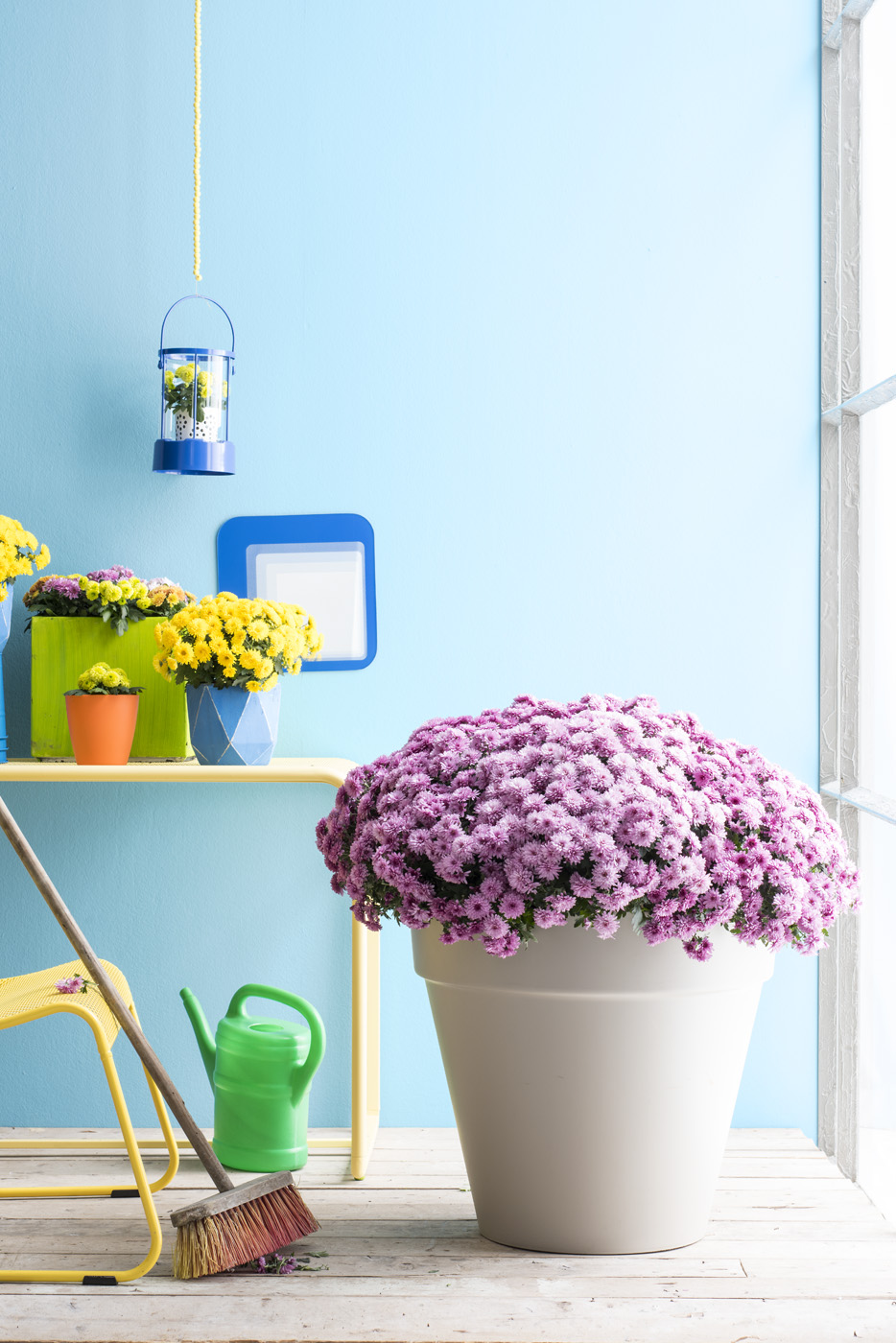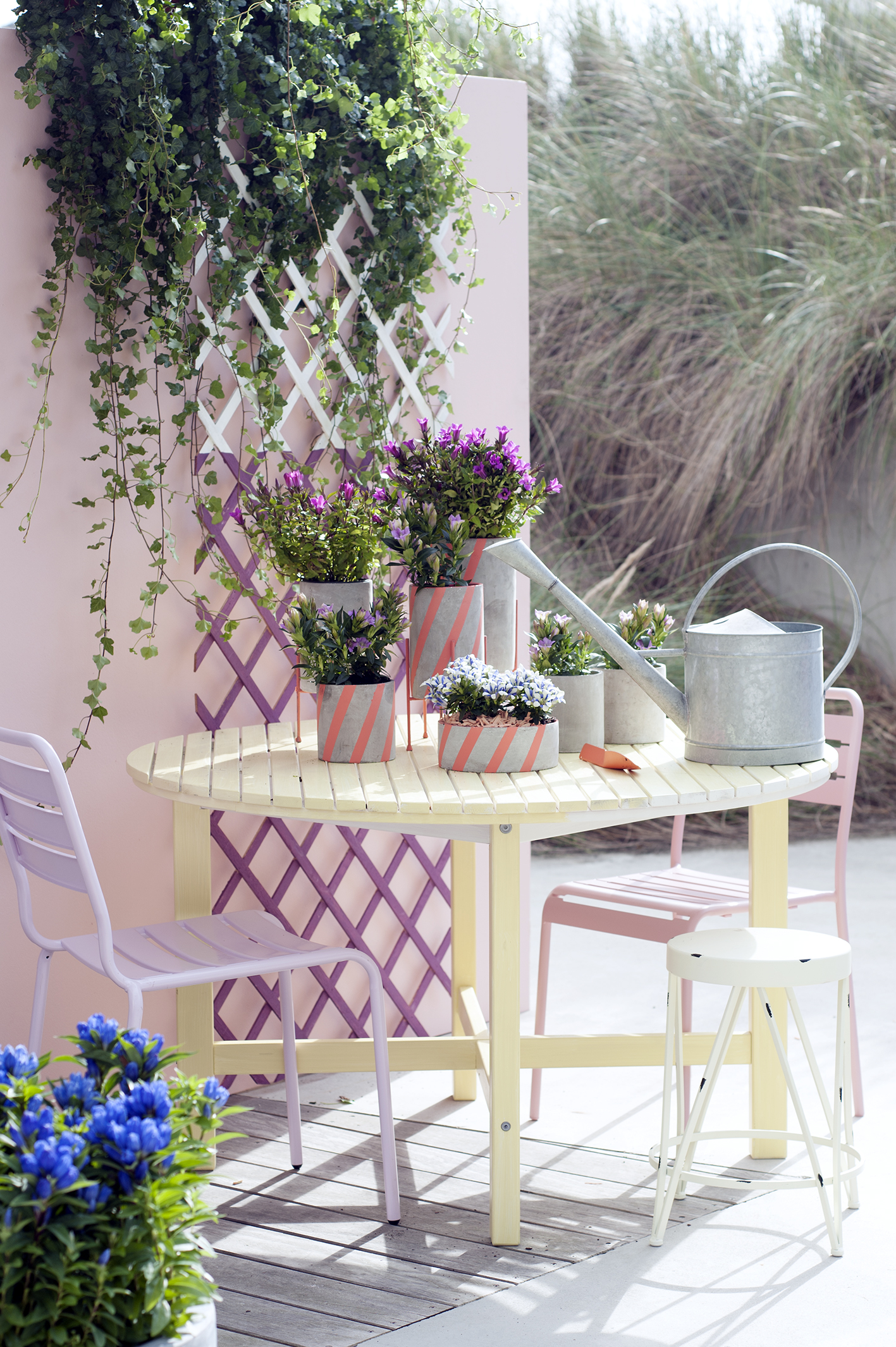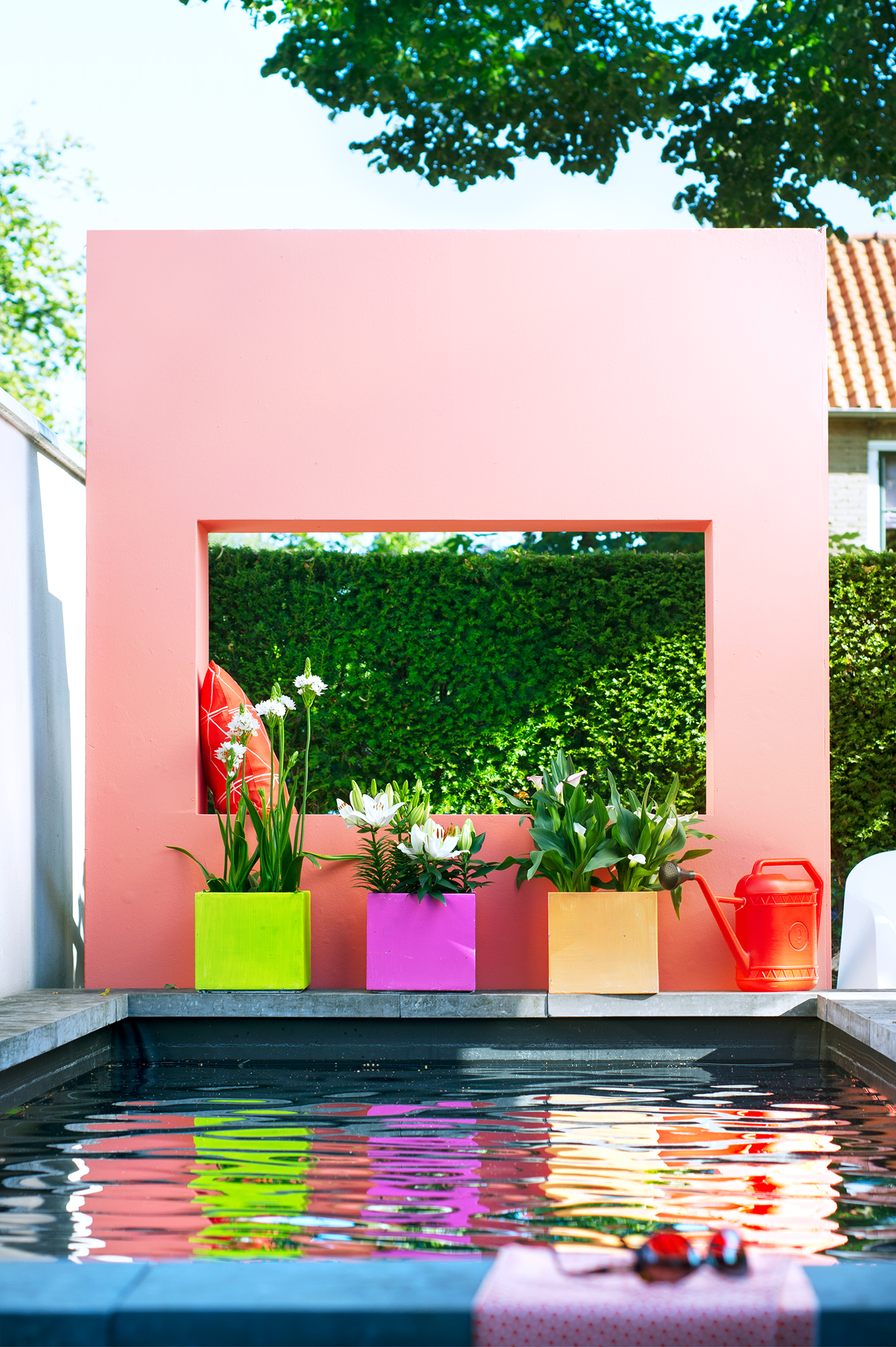Cushion Chrysanthemums - Garden Plant of the Month - September
Garden Plant of the Month for September: Cushion Chrysanthemums
Hemispheres packed with fabulous flowers!
Chrysanthemums are often thought of as cut flowers, but there is also a wide range of other chrysanthemums. In autumn in particular the range features cushion chrysanthemums, which flower when the days are short. The plant responds to the short days by creating buds. They’re branched, bushy plants in many different colours and flower shapes. Cushion chrysanthemums are very suitable for use outdoors in the garden or on the balcony, patio, garden paths or by the front door. The plants flower so profusely that the foliage is completely hidden. The attractive floral domes provide weeks of pleasure, which is why they’re deservedly the Garden Plant of the Month for September!
Chrysanthemums are often thought of as cut flowers, but there is also a wide range of other chrysanthemums. In autumn in particular the range features cushion chrysanthemums, which flower when the days are short. The plant responds to the short days by creating buds. They’re branched, bushy plants in many different colours and flower shapes. Cushion chrysanthemums are very suitable for use outdoors in the garden or on the balcony, patio, garden paths or by the front door. The plants flower so profusely that the foliage is completely hidden. The attractive floral domes provide weeks of pleasure, which is why they’re deservedly the Garden Plant of the Month for September!
Cushion Chrysanthemums
 From August onwards the days start get shorter, and that’s the time when the ‘short day’ plants start producing buds. One of those plants is the cushion chrysanthemum. The diameter of the hemispheres can range from 20 up to 60-80 cm. there are even some specimens with a span of more than 120 cm. The colours and flower shapes are astonishing: beautiful shades of pink, lilac or white, but particularly attractive autumn shades from yellow and orange through to red and brown, just like the autumn colours that are starting to show on the leaves. There are single and double flowered varieties, but also species with spatula-shaped or spider-like petals. The name chrysanthemum means “golden flower”. It’s a combination of the Greek words ‘chrysos’ (= gold) and ‘anthemon’ (= flower). Many species are therefore yellow in colour.
From August onwards the days start get shorter, and that’s the time when the ‘short day’ plants start producing buds. One of those plants is the cushion chrysanthemum. The diameter of the hemispheres can range from 20 up to 60-80 cm. there are even some specimens with a span of more than 120 cm. The colours and flower shapes are astonishing: beautiful shades of pink, lilac or white, but particularly attractive autumn shades from yellow and orange through to red and brown, just like the autumn colours that are starting to show on the leaves. There are single and double flowered varieties, but also species with spatula-shaped or spider-like petals. The name chrysanthemum means “golden flower”. It’s a combination of the Greek words ‘chrysos’ (= gold) and ‘anthemon’ (= flower). Many species are therefore yellow in colour.
 From August onwards the days start get shorter, and that’s the time when the ‘short day’ plants start producing buds. One of those plants is the cushion chrysanthemum. The diameter of the hemispheres can range from 20 up to 60-80 cm. there are even some specimens with a span of more than 120 cm. The colours and flower shapes are astonishing: beautiful shades of pink, lilac or white, but particularly attractive autumn shades from yellow and orange through to red and brown, just like the autumn colours that are starting to show on the leaves. There are single and double flowered varieties, but also species with spatula-shaped or spider-like petals. The name chrysanthemum means “golden flower”. It’s a combination of the Greek words ‘chrysos’ (= gold) and ‘anthemon’ (= flower). Many species are therefore yellow in colour.
From August onwards the days start get shorter, and that’s the time when the ‘short day’ plants start producing buds. One of those plants is the cushion chrysanthemum. The diameter of the hemispheres can range from 20 up to 60-80 cm. there are even some specimens with a span of more than 120 cm. The colours and flower shapes are astonishing: beautiful shades of pink, lilac or white, but particularly attractive autumn shades from yellow and orange through to red and brown, just like the autumn colours that are starting to show on the leaves. There are single and double flowered varieties, but also species with spatula-shaped or spider-like petals. The name chrysanthemum means “golden flower”. It’s a combination of the Greek words ‘chrysos’ (= gold) and ‘anthemon’ (= flower). Many species are therefore yellow in colour.Caring for cushion chrysanthemums
A cushion chrysanthemum is an easy plant. By following a couple of tips the plant will keep flowering from months, from August till November until the frosts arrive. In a light spot in partial shade through to full sun, the plant will transform into a colourful hemisphere. Regularly water the cushion chrysanthemums in the pot, and never allow the soil to dry out. The large dome means that the rainwater does not always reach the soil, so it can dry out. You should therefore check the soil regularly. A lavishly flowering plant needs extra energy, so give it some plant food once a fortnight. Regularly removing old wilted flowers will allow you to enjoy your cushion chrysanthemums even longer.
A cushion chrysanthemum is an easy plant. By following a couple of tips the plant will keep flowering from months, from August till November until the frosts arrive. In a light spot in partial shade through to full sun, the plant will transform into a colourful hemisphere. Regularly water the cushion chrysanthemums in the pot, and never allow the soil to dry out. The large dome means that the rainwater does not always reach the soil, so it can dry out. You should therefore check the soil regularly. A lavishly flowering plant needs extra energy, so give it some plant food once a fortnight. Regularly removing old wilted flowers will allow you to enjoy your cushion chrysanthemums even longer.
Tips for pruning and keeping cushion chrysanthemums
The plant can be brought to flower again next year once it has finished flowering. Place the plant in a cool but frost-free spot before the frosts come, and cut it back to a few centimetres above the ground in early spring The plant can go outdoors again in March/April, and when the days are longer than 12 hours it will form stems and leaves. Once the days start getting shorter, the cushion chrysanthemum will flower again so it becomes a feature in the garden in late summer and autumn once more!
The plant can be brought to flower again next year once it has finished flowering. Place the plant in a cool but frost-free spot before the frosts come, and cut it back to a few centimetres above the ground in early spring The plant can go outdoors again in March/April, and when the days are longer than 12 hours it will form stems and leaves. Once the days start getting shorter, the cushion chrysanthemum will flower again so it becomes a feature in the garden in late summer and autumn once more!
I can personally vouch for these, I have several in pots and apart from a drop of water and pruning (I do this late spring) they look after themselves over many years.
Although Chrysants are not the most sort after wedding flower , these plants would make excellent displays for your wedding - whether grouped on the tables for your guests or the larger plants used at the aisle entrance or altar, or for a civil ceremony the doorway displays. These can then be given out to guests for thank you's. They are budget friendly and colourful for an autumn wedding.
Thank you to Thejoyofplants.co.uk. and https://www.flowercouncil.co.uk for the above information.
We can source all of these plants through the season just ask us for your requirements. We can also source a wide range of pots to compliment each plant or for a striking look bright and colourful pots of all shapes and sizes. Whether for a long term display or for a one off event we can source, supply and set up so you don't have to. A care service can also be supplied if needed.
Sandra x
We can source all of these plants through the season just ask us for your requirements. We can also source a wide range of pots to compliment each plant or for a striking look bright and colourful pots of all shapes and sizes. Whether for a long term display or for a one off event we can source, supply and set up so you don't have to. A care service can also be supplied if needed.
Sandra x

 The current Gentian range offers compact growth and rich continued flowering. These plants look their best between July and October. The colour blue in particular has been extensively developed in the Gentian range. There are sky blue, pale and dark blue and indigo varieties. The Gentian originates from the temperate mountain regions in the northern hemisphere and the Andes. The name Gentian derives from Gentius, King of Illyria (former Yugoslavia) who is said to have discovered the healing properties attributed to Gentian, such as strengthening the digestive and immune systems and the ability to reduce bile.
The current Gentian range offers compact growth and rich continued flowering. These plants look their best between July and October. The colour blue in particular has been extensively developed in the Gentian range. There are sky blue, pale and dark blue and indigo varieties. The Gentian originates from the temperate mountain regions in the northern hemisphere and the Andes. The name Gentian derives from Gentius, King of Illyria (former Yugoslavia) who is said to have discovered the healing properties attributed to Gentian, such as strengthening the digestive and immune systems and the ability to reduce bile.

 Zantedeschia is often known as the Calla or Arum Lily. In the past, we were only really familiar with the flowers of the white Zantedeschia aethiopica - it has large white calyxes and can grow quite big in the garden. There are now more compact varieties, in many different colours from white to orange and dark purple to yellow. The flowers are smaller, the plants also have attractive markings on the leaves in the form of silver spots.
Zantedeschia is often known as the Calla or Arum Lily. In the past, we were only really familiar with the flowers of the white Zantedeschia aethiopica - it has large white calyxes and can grow quite big in the garden. There are now more compact varieties, in many different colours from white to orange and dark purple to yellow. The flowers are smaller, the plants also have attractive markings on the leaves in the form of silver spots. 



 Mandevilla is a climbing shrub that flowers from May to October. Although this exotic climber originates from South America, it’s also very happy in our gardens. With its trumpet-shaped, beautifully scented flowers the plant keeps blooming endlessly. The flowers stand out beautifully against the dark green, shiny foliage.
Mandevilla is a climbing shrub that flowers from May to October. Although this exotic climber originates from South America, it’s also very happy in our gardens. With its trumpet-shaped, beautifully scented flowers the plant keeps blooming endlessly. The flowers stand out beautifully against the dark green, shiny foliage.

 Clematis: Many colours, flower shapes, flower sizes
Clematis: Many colours, flower shapes, flower sizes





